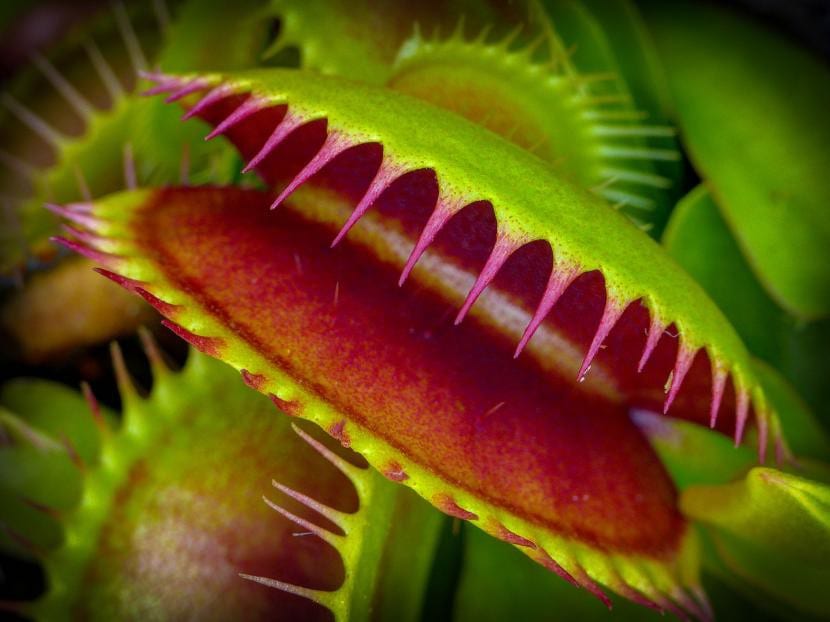
Dionaea muscipula
Carnivorous plants are one of the most striking. Unlike the ones we are used to seeing, they have evolved to feed on animal bodies, mostly insects. The reason? We find it in the soils where they grow: they are so poor in nutrients that evolution has wanted their leaves to become sophisticated traps in order to survive.
Although there are an estimated 600 species, there are very few that we find for sale in nurseries, which is a real shame, since there are many types of carnivorous plants that we can grow without problems in hot and temperate climates. And these are just a few.
Cephalotus follicularis

If we do not have much space and we want a carnivore that catches small insects, without a doubt the Cephalotus is our best option. It is native to southwestern Australia, and It is made up of jug-shaped leaves that do not exceed 4cm in height. Its growth rate is very slow; in fact, at 2-3 years of age it will not measure more than 1cm, and it is likely that it has not yet acquired its typical colors.
Can be grown outdoors in warm-temperate climates, with maximum temperatures of up to 25ºC. Likewise, it is important to bear in mind that it must go through a period of two months of rest, with low temperatures of 5-6ºC.
darlingtonia californica
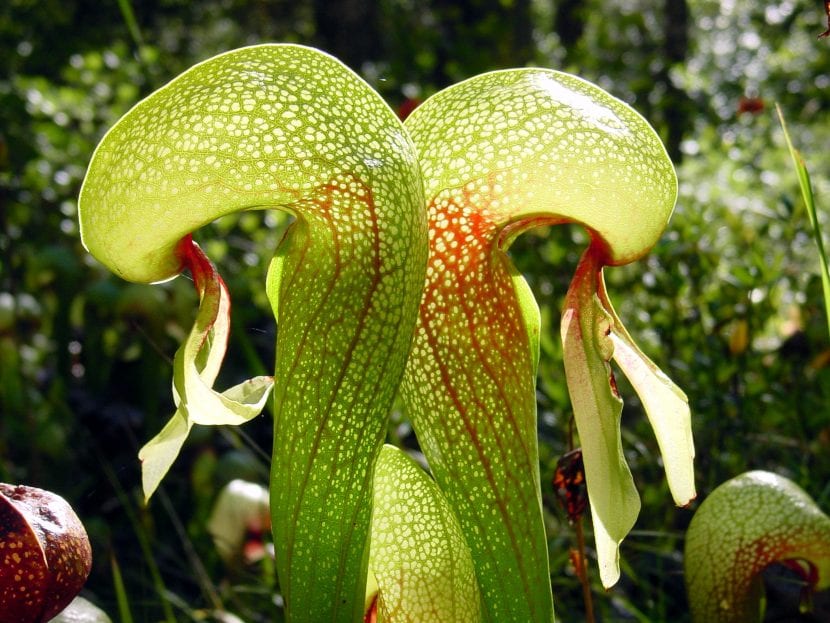
It is one of the most curious species. Because of its appearance, it is very reminiscent of the cobra snake, which is why it is known as the cobra lily. It is a plant native to California and Oregon, where it grows in swamps and near fresh water sources. This water collects it through its roots, not in its traps as other carnivores do.
It can reach a height of 10 centimeters, with some very peculiar jugs where we can see discolorations throughout the plant. Despite how beautiful they are, unfortunately their cultivation is very difficult in hot climates. They need the temperature to be soft, from 0º to 30ºC at most and that the irrigation is made immersion.
In addition, it is very important that the winter is cold, with values close to 2ºC, since otherwise it will not prosper.
Dionaea muscipula
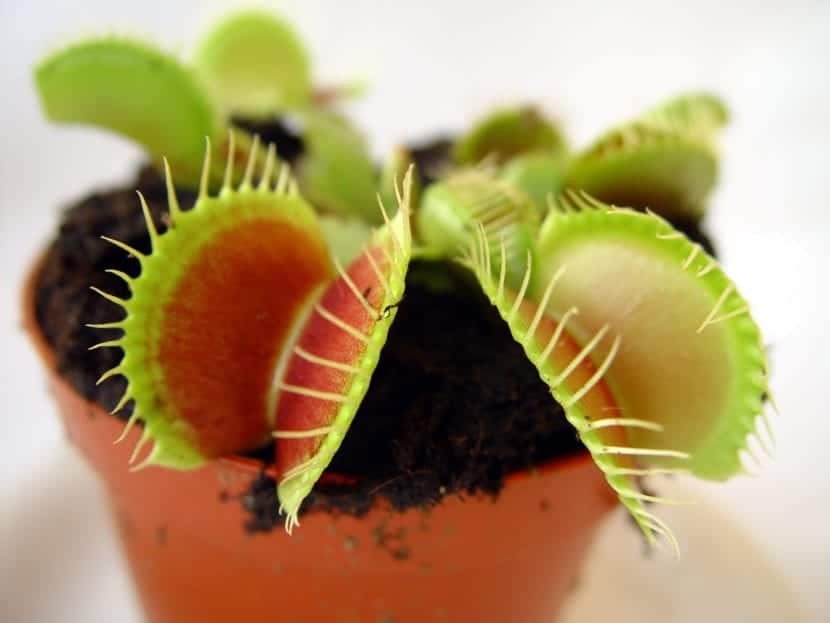
It is the best known. It is popularly called venus flytrap or dionaea flytrap. It is a plant native to North Carolina and South Carolina, which that grows to a height of 4cm, forming a single rosette of modified leaves that have become traps.
On both margins, there are 0,5cm long teeth and very fine. In addition, on the inside of the petiole there are three sensitive hairs: they are the ones that the prey must touch so that the plant can feed. Traps close automatically if the insect touches two hairs within 20 seconds, or just one twice quickly.
In order to grow well it is necessary that the plant hibernate, that is to say, that it spends two months at low temperatures (below 10ºC). Se can be grown outdoors all year round in climates such as the Mediterranean, where occasional frosts of up to -2ºC occur.
Drosera
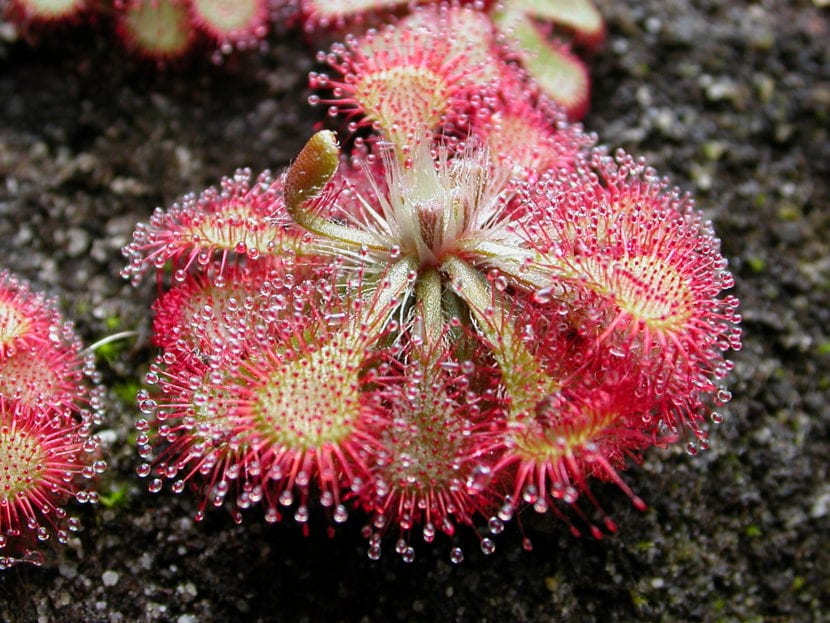
Sundew spatulata
Known as sundew, it is one of the most numerous genera of carnivorous plants. There are an estimated 194 species, distributed throughout the world where it can be found in soils rich in acids and high levels of sunlight.
Forms rosettes that usually do not exceed 4cm in height, with modified leaves with a high ornamental value whose end is covered by little hairs where the insects are stuck. The trap, once it catches its prey, begins to coil, and when finished, it digests it.
These plants are some of the most beloved by collectors: not only is there an enormous variety, but they are also relatively easy to care, as they only need warm climates and a protected area from the star king.
Drosophyllum lusitanicum
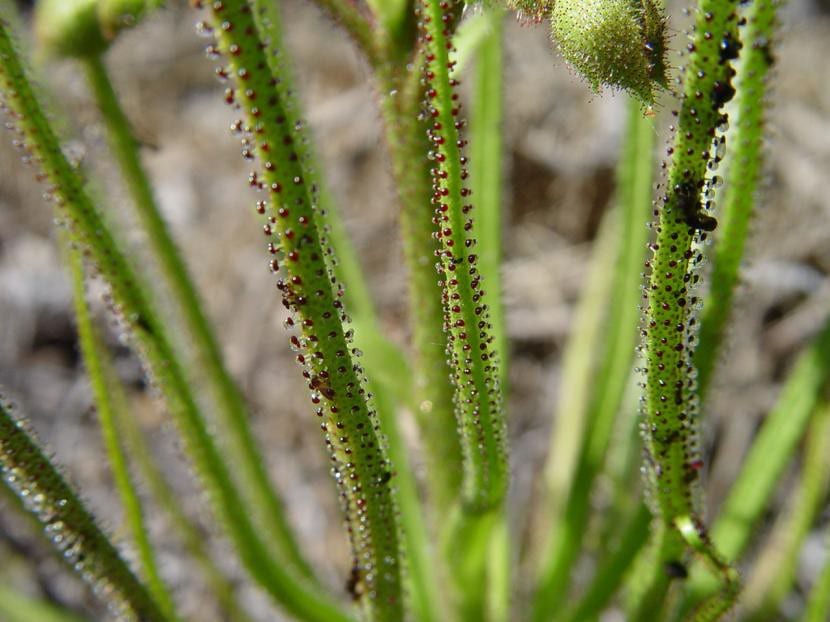
It is one of the few carnivorous plants that we can find in the Iberian Peninsula, specifically on the coasts of Portugal and in the southwest of Spain. It grows in soils called herrizas, which are soils very rich in nutrients but poor in iron. It is capable of photosynthesis, but to get the nitrogen you need you must hunt insects, mainly flies and mosquitoes.
Forms rosettes with leaves up to 20cm in length, covered with red-headed glandular hairs. These hairs give off droplets of a viscous and aromatic secretion that attracts insects, which quickly become attached.
In cultivation it is a complicated plant. In order to have an excellent development it is essential that the climate is temperate, with mild summers and winters with occasional weak frosts of up to -4ºC.
pinguicula grandiflora
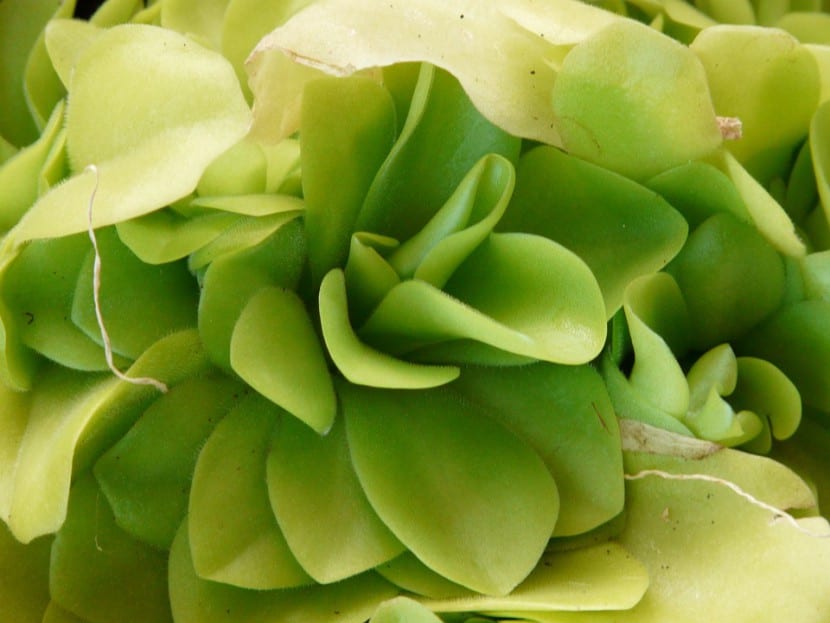
La Pinguicula, known as the large-flowered grease, water violets, tuna or fountain flower, it is a really very decorative plant that lives in humid and grassy grasslands, on the edges of streams and springs in Ireland, France, Switzerland and Spain. Forms rosettes of sticky green leaves whose height does not exceed 5-6 centimeters.
At first glance, it looks like any other plant, but just leave it outside for a day. Only 24 hours later we would see that it has small insects stuck on the underside of its leaf-traps.
Grows wonderfully in hot climates, where winters are cool (minimum temperature of 0ºC), but you need protection against hail and snails.
Sarracenia
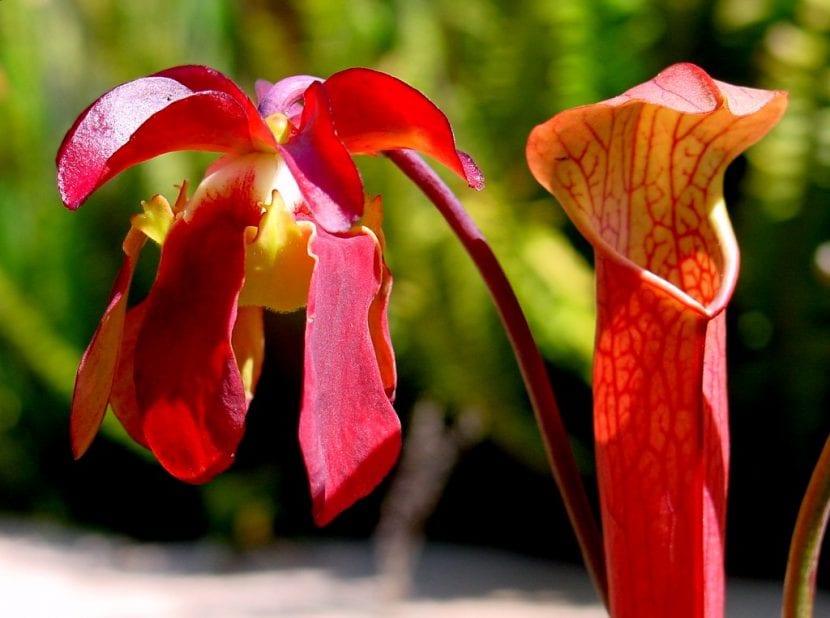
sarracenia rubra
All the Sarracenia They are another type of carnivorous plants that we can more easily recognize. They are native to eastern Texas, the Great Lakes area, and southeastern Canada, as well as the southeastern United States. A total of 11 species are known, such as the sarracenia alata, which can reach a height of 1 meter more, or the sarracenia rubra, one of the most beautiful with reddish jugs.
Depending on the type, they can grow from 30 centimeters to almost 2 meters. Their traps are like tubes or jugs on the edge of which is nectar, which attracts insects, and water inside. When, for example, a fly lands on it, it has to be very careful not to fall, because the hairs on it are not only very slippery but also grow downwards.
Like the Venus flytrap, the Sarracenia need to be cold during winter to be able to resume its growth strongly in spring. It resists well temperatures down to -3ºC.
If you want to know how they are transplanted, take a look at our video:
Did you know these carnivorous plants?